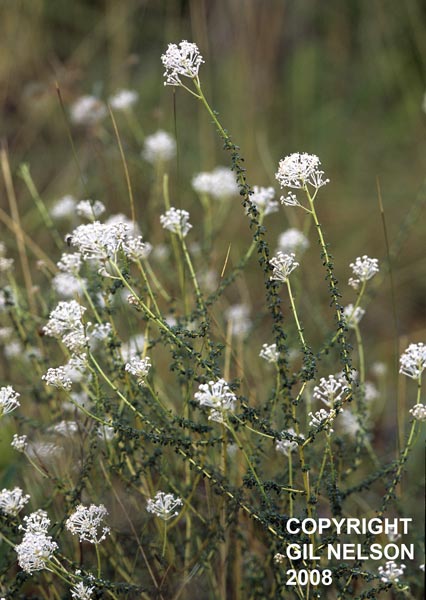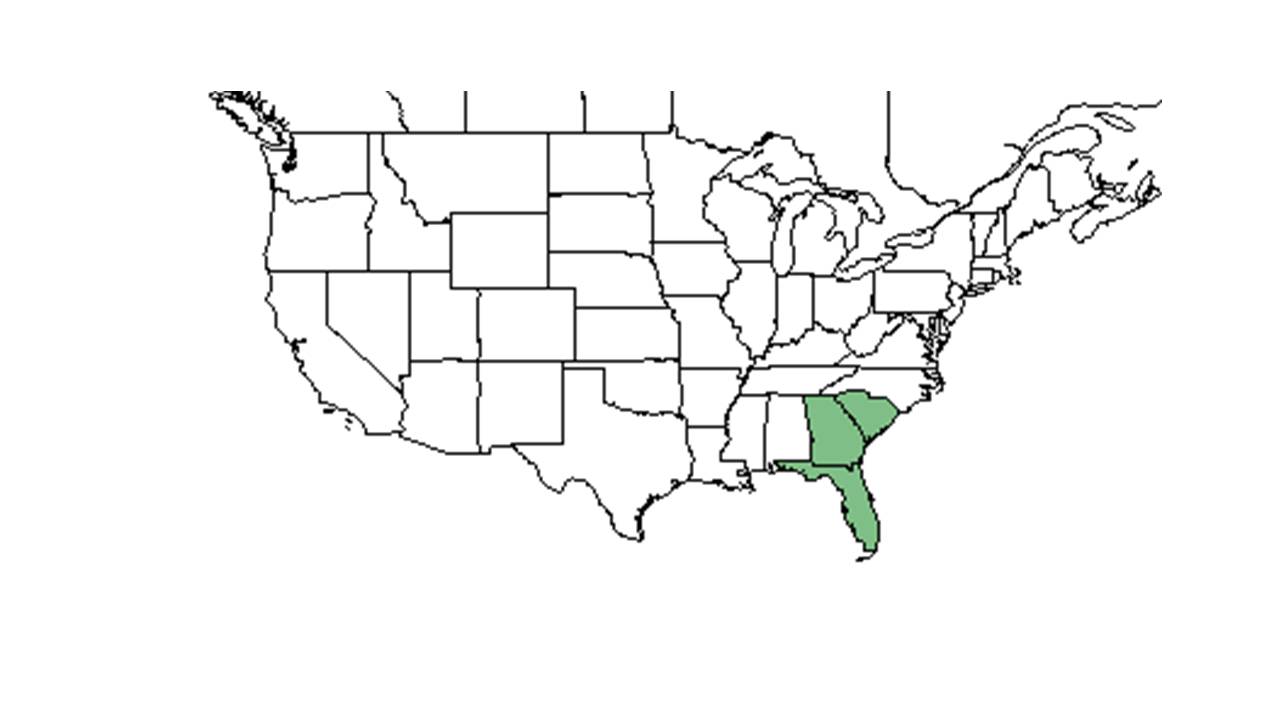Difference between revisions of "Ceanothus microphyllus"
(→References and notes) |
(→Taxonomic notes) |
||
| (48 intermediate revisions by 11 users not shown) | |||
| Line 4: | Line 4: | ||
| name = Ceanothus microphyllus | | name = Ceanothus microphyllus | ||
| image = Ceanothus microphyllus_Gil.jpg | | image = Ceanothus microphyllus_Gil.jpg | ||
| − | | image_caption = | + | | image_caption = Photo by Gil Nelson |
| regnum = Plantae | | regnum = Plantae | ||
| divisio = Magnoliophyta - Flowering plants | | divisio = Magnoliophyta - Flowering plants | ||
| Line 15: | Line 15: | ||
| binomial_authority = Michx. | | binomial_authority = Michx. | ||
| range_map = CARP_CORY_dist.jpg | | range_map = CARP_CORY_dist.jpg | ||
| − | | range_map_caption = Natural range of ''Ceanothus microphyllus'' from USDA NRCS [http://www.plants.usda.gov Plants Database]. | + | | range_map_caption = Natural range of ''Ceanothus microphyllus'' from USDA NRCS [http://www.plants.usda.gov/core/profile?symbol=CEMI4 Plants Database]. |
}} | }} | ||
| + | Common name: Littleleaf Buckbrush | ||
| + | ==Taxonomic notes== | ||
| + | The specific epithet refers to the reduced leaves that are tiny rounded nubs.<ref name="hawthorn">[[http://hawthornhillwildflowers.blogspot.com/2010/01/littleleaf-new-jersey-tea-ceanothus.html]]. Native Florida Wildflowers. Accessed: April 12, 2016</ref> | ||
| + | |||
| + | Synonyms: none<ref name=weakley>Weakley, A.S. 2020. Flora of the Southeastern United States. Edition of 20 October 2020. University of North Carolina at Chapel Hill, Chapel Hill, North Carolina.</ref> | ||
| + | |||
| + | Varieties: none<ref name=weakley/> | ||
| + | |||
==Description== | ==Description== | ||
<!-- Basic life history facts such as annual/perrenial, monoecious/dioecious, root morphology, seed type, etc. --> | <!-- Basic life history facts such as annual/perrenial, monoecious/dioecious, root morphology, seed type, etc. --> | ||
| − | |||
| − | This species has been observed to have several main branches near the base ( | + | ''C. microphyllus'' is a perennial shrub that is in the Rhamnaceae family. It has small leaves that are less than 1/2 inch long, and usually reaches heights of 1 foot with 2-3 feet in spread.<ref name= "lady bird">[[https://www.wildflower.org/plants/search.php?search_field=&newsearch=true]] Lady Bird Johnson Wildflower Center. Accessed: April 4, 2019</ref> This species has been observed to have several main branches near the base.<ref name="fsu">Florida State University Robert K. Godfrey Herbarium database. URL: http://herbarium.bio.fsu.edu. Last accessed: June 2014. Collectors: Loran C. Anderson, R. A. Norris, Andre F. Clewell, Robert K. Godfrey, Steve L. Orzell, R. Komarek and Helen Roth. States and Counties: Florida: Gadsden, Liberty, and Wakulla. Georgia: Decatur, Grady, and Thomas.</ref>The flowers have obdiplostemony stamens, five clawed petals, and white. Fruits are explosively dehiscent. Mature fruits are dry, and three lobed.<ref>Coile N.C. 1992. Little-leaf Redroot. Palmetto 12(1):10-11.</ref> |
==Distribution== | ==Distribution== | ||
| + | It is native to Alabama, Georgia, and Florida.<ref name= "USDA">USDA, NRCS. (2016). The PLANTS Database (http://plants.usda.gov, 4 April 2019).</ref> <ref>National Plant Data Team, Greensboro, NC 27401-4901 USA.</ref> It is listed as vulnerable in Alabama and Georgia.<ref name="natureserve">[[http://explorer.natureserve.org/servlet/NatureServe?searchName=Ceanothus+microphyllus]]NatureServe. Accessed: April 12, 2016</ref> Weakley notes that ''C. microphyllus'' is found a few kilometers away from the South Carolina border, and may spread to that state.<ref name= "Weakley"/> | ||
| + | |||
==Ecology== | ==Ecology== | ||
| − | ===Habitat=== <!--Natural communities, human disturbed habitats, topography, hydrology, soils, light, fire regime requirements for removal of competition, etc.--> | + | ===Habitat===<!--Natural communities, human disturbed habitats, topography, hydrology, soils, light, fire regime requirements for removal of competition, etc.--> |
| − | This species has been found in open longleaf pine-wiregrass savannahs, ridges, slopes, and wetlands | + | This species has been found in open longleaf pine-wiregrass savannahs, sandhills, ridges, slopes, and wetlands. It has been observed to grow in well-drained dry loamy sands in the uplands as well as mesic environments.<ref name="fsu"/><ref name= "Weakley"/> |
| + | |||
| + | Associated species include ''[[Pinus palustris]]'' and ''[[Aristida stricta]].''<ref name="fsu"/><ref name= "Weakley">Weakley, A. S. (2015). Flora of the Southern and Mid-Atlantic States. Chapel Hill, NC, University of North Carolina Herbarium.</ref> | ||
| + | |||
| + | ===Phenology=== <!--Timing off flowering, fruiting, and environmental triggers. Cite PanFlora website if appropriate: http://www.gilnelson.com/PanFlora/ --> | ||
| + | ''C. microphyllus'' has been observed flowering from March to May and July with peak inflorescence in April.<ref>Nelson, G. [http://www.gilnelson.com/ PanFlora]: Plant data for the eastern United States with emphasis on the Southeastern Coastal Plains, Florida, and the Florida Panhandle. www.gilnelson.com/PanFlora/ Accessed: 7 DEC 2016</ref> | ||
| − | |||
===Seed dispersal=== | ===Seed dispersal=== | ||
| − | ===Seed bank and germination=== | + | This species is thought to be dispersed by ants and/or explosive dehiscence. <ref>Kirkman, L. Katherine. Unpublished database of seed dispersal mode of plants found in Coastal Plain longleaf pine-grasslands of the Jones Ecological Research Center, Georgia.</ref> |
| − | + | ||
| − | + | <!--===Seed bank and germination===--> | |
| − | === | + | ===Fire ecology===<!--Fire tolerance, fire dependence, adaptive fire responses--> |
| − | === | + | This species occurs in mature longleaf pine communities that are frequently burned.<ref name="fsu"/>Resprouts after quick burning fire.<ref>Coile N. C. 1992. Little-leaf Redroot. Palmetto 12(1):10-11</ref> |
| − | ===Diseases and parasites=== | + | |
| − | ==Conservation and | + | ===Pollination=== |
| − | == | + | Pollinators are necessary for fruits to form. Many insects are attracted to the flowers.<ref>Coile N.C. 1992. Little-leaf Redroot. Palmetto 12(1):10-11</ref> |
| + | |||
| + | ===Herbivory and toxicology=== | ||
| + | Trace amounts of ''C. microphyllus'' have been found to be eaten by white-tailed deer.<ref name= "Harlow">Harlow, R. F. (1961). "Fall and winter foods of Florida white-tailed deer." The Quarterly Journal of the Florida Academy of Sciences 24(1): 19-38.</ref> | ||
| + | |||
| + | <!--===Diseases and parasites===--> | ||
| + | |||
| + | ==Conservation, cultivation, and restoration== | ||
| + | |||
| + | ==Cultural use== | ||
==Photo Gallery== | ==Photo Gallery== | ||
| + | <gallery widths=180px> | ||
| + | </gallery> | ||
| + | |||
==References and notes== | ==References and notes== | ||
| − | |||
| − | |||
| − | |||
| − | |||
| − | |||
Latest revision as of 19:35, 22 May 2023
| Ceanothus microphyllus | |
|---|---|

| |
| Photo by Gil Nelson | |
| Scientific classification | |
| Kingdom: | Plantae |
| Division: | Magnoliophyta - Flowering plants |
| Class: | Magnoliopsida – Dicotyledons |
| Order: | Rhamnales |
| Family: | Rhamnaceae |
| Genus: | Ceanothus |
| Species: | C. microphyllus |
| Binomial name | |
| Ceanothus microphyllus Michx. | |

| |
| Natural range of Ceanothus microphyllus from USDA NRCS Plants Database. | |
Common name: Littleleaf Buckbrush
Contents
Taxonomic notes
The specific epithet refers to the reduced leaves that are tiny rounded nubs.[1]
Synonyms: none[2]
Varieties: none[2]
Description
C. microphyllus is a perennial shrub that is in the Rhamnaceae family. It has small leaves that are less than 1/2 inch long, and usually reaches heights of 1 foot with 2-3 feet in spread.[3] This species has been observed to have several main branches near the base.[4]The flowers have obdiplostemony stamens, five clawed petals, and white. Fruits are explosively dehiscent. Mature fruits are dry, and three lobed.[5]
Distribution
It is native to Alabama, Georgia, and Florida.[6] [7] It is listed as vulnerable in Alabama and Georgia.[8] Weakley notes that C. microphyllus is found a few kilometers away from the South Carolina border, and may spread to that state.[9]
Ecology
Habitat
This species has been found in open longleaf pine-wiregrass savannahs, sandhills, ridges, slopes, and wetlands. It has been observed to grow in well-drained dry loamy sands in the uplands as well as mesic environments.[4][9]
Associated species include Pinus palustris and Aristida stricta.[4][9]
Phenology
C. microphyllus has been observed flowering from March to May and July with peak inflorescence in April.[10]
Seed dispersal
This species is thought to be dispersed by ants and/or explosive dehiscence. [11]
Fire ecology
This species occurs in mature longleaf pine communities that are frequently burned.[4]Resprouts after quick burning fire.[12]
Pollination
Pollinators are necessary for fruits to form. Many insects are attracted to the flowers.[13]
Herbivory and toxicology
Trace amounts of C. microphyllus have been found to be eaten by white-tailed deer.[14]
Conservation, cultivation, and restoration
Cultural use
Photo Gallery
References and notes
- ↑ [[1]]. Native Florida Wildflowers. Accessed: April 12, 2016
- ↑ 2.0 2.1 Weakley, A.S. 2020. Flora of the Southeastern United States. Edition of 20 October 2020. University of North Carolina at Chapel Hill, Chapel Hill, North Carolina.
- ↑ [[2]] Lady Bird Johnson Wildflower Center. Accessed: April 4, 2019
- ↑ 4.0 4.1 4.2 4.3 Florida State University Robert K. Godfrey Herbarium database. URL: http://herbarium.bio.fsu.edu. Last accessed: June 2014. Collectors: Loran C. Anderson, R. A. Norris, Andre F. Clewell, Robert K. Godfrey, Steve L. Orzell, R. Komarek and Helen Roth. States and Counties: Florida: Gadsden, Liberty, and Wakulla. Georgia: Decatur, Grady, and Thomas.
- ↑ Coile N.C. 1992. Little-leaf Redroot. Palmetto 12(1):10-11.
- ↑ USDA, NRCS. (2016). The PLANTS Database (http://plants.usda.gov, 4 April 2019).
- ↑ National Plant Data Team, Greensboro, NC 27401-4901 USA.
- ↑ [[3]]NatureServe. Accessed: April 12, 2016
- ↑ 9.0 9.1 9.2 Weakley, A. S. (2015). Flora of the Southern and Mid-Atlantic States. Chapel Hill, NC, University of North Carolina Herbarium.
- ↑ Nelson, G. PanFlora: Plant data for the eastern United States with emphasis on the Southeastern Coastal Plains, Florida, and the Florida Panhandle. www.gilnelson.com/PanFlora/ Accessed: 7 DEC 2016
- ↑ Kirkman, L. Katherine. Unpublished database of seed dispersal mode of plants found in Coastal Plain longleaf pine-grasslands of the Jones Ecological Research Center, Georgia.
- ↑ Coile N. C. 1992. Little-leaf Redroot. Palmetto 12(1):10-11
- ↑ Coile N.C. 1992. Little-leaf Redroot. Palmetto 12(1):10-11
- ↑ Harlow, R. F. (1961). "Fall and winter foods of Florida white-tailed deer." The Quarterly Journal of the Florida Academy of Sciences 24(1): 19-38.